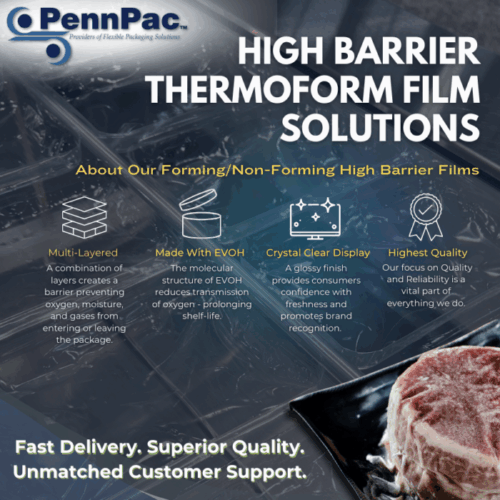
Estimated Reading Time: 15 minutes
Key Takeaways
- Specialty films enhance protection, durability, and aesthetic appeal in packaging.
- Customization of films allows for unique branding and product differentiation.
- Sustainability and cost-effectiveness are critical benefits of using specialty films.
- Future trends include advanced technologies and increased focus on eco-friendly solutions.
Importance of Specialty Films in the Packaging Industry
Specialty films play a critical role in enhancing the protection, durability, and aesthetic appeal of packaging. Here are some important points regarding their significance:
- Enhanced Protection: Specialty films offer superior barrier properties that help preserve product freshness. They block moisture, gases, and odors, which makes them ideal for food packaging and pharmaceuticals. Learn more here.
- Durability: These films extend the shelf life of packaged products, reducing waste and promoting sustainability.
- Aesthetic Appeal: The versatility in designs allows for innovative branding opportunities. Features such as texture and printability turn simple packaging into a marketing tool, enhancing product visibility and consumer engagement.
The role of specialty films is further examined by Markets and Markets, Prismane Consulting, and Nobel University. Specialty films are thus essential in the context of custom packaging solutions, bridging the gap between functionality and aesthetics.
Types of Specialty Films
Overview of Different Types of Specialty Films
Specialty films can vary significantly based on multiple parameters, including material composition, thickness, surface treatments, and engineered features. Below are some key types of specialty films:
- Material Composition: Common materials include PE, PP, PET, PVC, and PA. Source
- Thickness Variation: Different thickness levels cater to specific functional requirements.
- Surface Treatments: Treatments, such as corona treatment, enhance printability and adhesion.
- Engineered Features: Specialty films, such as micro-textured films or those with enhanced barrier capabilities, serve particular needs.
Custom Specialty Films
Customization is a hallmark of the specialty film industry. Custom specialty films are tailored to specific requirements, which might include varying thickness, surface treatments, finishes, and printability.
- Unique Tactile Effects: Brands can create films with textures that enhance the feel of the packaging.
- Superior Barrier Properties: Custom formulations can provide specific protection against elements harmful to product integrity. Source
- Enhanced Visual Impact: Custom films can be designed to reflect brand identity, making them more appealing to customers.
High-Performance Films
High-performance films are characterized by their outstanding attributes, making them suitable for specialized applications:
- Chemical Resistance: These films can withstand various chemicals, making them ideal for products needing secure packaging.
- Mechanical Strength: High-performance films retain integrity under stress, ensuring that products remain protected.
- Optical Clarity: This feature is particularly important for consumer goods where visibility is key.
Applications of Specialty Films in Packaging
Usage in Custom Packaging Solutions
Specialty films are pivotal in various packaging formats. They are widely used in:
- Flexible Packaging: Offering adaptability in storage and shipping.
- Pouches: Ensuring easy access while providing protection.
- Labels: Allowing for clear branding and product information.
- Shrink Sleeves: Providing full-body decoration and secure sealing.
- Laminations: Enhancing durability and aesthetics.
Industries Benefiting from Specialty Films
Numerous industries benefit significantly from specialty films, including:
- Food and Beverage: Ensuring product freshness and safety.
- Pharmaceuticals: Protecting sensitive formulations and compliance with regulations.
- Personal Care: Offering attractive solutions for packaging cosmetics and toiletries.
- Electronics: Providing protection against dust and moisture.
- Luxury Goods: Enhancing product presentation to justify premium pricing.
Case Studies Showcasing Successful Implementations
Several case studies highlight successful implementations of specialty films:
- Health and Beauty Brands: Utilizing hexagonal prism-shaped packaging with specialty films effectively captures consumer attention on store shelves.
- Adhesive-Free Packaging Solutions: Converters are leveraging adhesive-free or thermal lamination options, creating flexible, high-end packaging that appeals to modern consumers.
Benefits of Using Specialty Films for Packaging
Enhanced Protection and Durability
Specialty films excel in providing robust barrier properties against moisture, oxygen, and contaminants. Key benefits include:
- Extended Shelf Life: Protects products from spoilage and preserves quality.
- Maintenance of Product Integrity: Ensures that health and safety standards are met, especially in food and pharmaceuticals.
Aesthetic and Branding Opportunities
The design possibilities with specialty films can greatly enhance a brand’s market presence. Some advantages are:
- Memorable Unboxing Experience: Unique finishes create a lasting impression on consumers.
- Reinforcement of Brand Identity: Packaging style can effectively communicate brand values and attract target demographics.
Cost-Effectiveness and Sustainability
While specialty films may come with higher initial costs, they provide long-term savings and sustainability benefits:
- Durability: Reducing waste through better performance and longevity leads to overall lower packaging costs.
- Sustainable Options: Many specialty films are recyclable or made from post-consumer recycled (PCR) materials, meeting growing consumer demand for environmentally friendly practices. Source
Selecting the Right Specialty Film for Your Packaging Needs
Factors to Consider When Choosing Specialty Films
When selecting specialty films for your packaging, consider factors such as:
- Product Protection Needs: Determine what level of protection the product requires against environmental factors.
- Barrier Requirements: Choose the appropriate films based on what elements (e.g., moisture, gases) need to be blocked.
- Printability and Flexibility: Assess how the film will hold up to printing techniques and how flexible it needs to be for your application.
Matching Film Properties to Specific Packaging Requirements
Each film type has specific characteristics that make it suitable for different uses. For example:
- PET Films: Known for clarity and rigidity, ideal for products needing visibility without compromising strength.
- PE Films: Favored for sealing properties and flexibility, suitable for wrapping and pouches.
Tips for Collaborating with Suppliers
- Engage Early: Involve suppliers in the planning stages to explore all customization options.
- Trial Runs: Conduct trials to ensure the film performs as expected before full-scale production.
- Ensure Compatibility: Verify that your chosen film works well with your printing and lamination technologies.
Future Trends in Specialty Films for Packaging
Innovations and Advancements in Specialty Film Technology
The specialty films sector is witnessing rapid innovations, including:
- Multi-Layer Films: These films come with enhanced barrier layers that provide better protection.
- Specialty Coatings: Allow for improved performance while being compatible with modern print technologies.
- Digital-Print Compatible Films: Support personalized packaging at scale, allowing brands to create customized solutions easily.
Emerging Applications and Potential Market Growth
The demand for specialty films is on the rise, driven by industries that focus on:
- Flexible Packaging: Increasingly popular in food, snacks, and convenience items.
- Electronics: Demand for protective layers in products requiring electronic screening and moisture protection.
The Role of Sustainability in the Future of Specialty Films
Sustainability will increasingly shape the future of specialty films as brands look for eco-friendly packaging solutions:
- Recycling Initiatives: The use of recyclable specialty films and bio-based polymers is gaining traction.
- Reduced Material Usage: Efficient designs focusing on less waste support circular economy principles.
Conclusion
Recap of Key Points
In summary, specialty films are crucial for enhancing custom packaging through improved protection, aesthetic appeal, and sustainability. Their importance in various industries cannot be overstated.
Final Thoughts on the Importance of Specialty Films
As brands seek to differentiate themselves in a competitive market, the role of specialty films in achieving enhanced performance and visual appeal is expanding.
Encouragement to Explore Specialty Film Options
Brands and converters are encouraged to explore specialty film options, maximizing their packaging impact and overall efficiency. Specialty films offer numerous benefits that can lead to more engaging consumer interactions and sustainable practices in packaging.
For all your custom specialty film needs, consider investing in these dynamic solutions that mirror the demands of the modern marketplace. By understanding and leveraging specialty films, companies can not only improve their product packaging but also contribute to a more sustainable future.
FAQ
What are specialty films?
Specialty films are engineered polymer films designed with specific properties tailored for various applications, especially in the packaging industry.
How do specialty films enhance packaging?
They provide superior barrier properties, enhance durability, and offer aesthetic design options that improve product protection and visual appeal.
Are specialty films sustainable?
Yes, many specialty films are recyclable or made from post-consumer recycled materials, supporting environmentally friendly packaging practices.
What industries benefit the most from specialty films?
Industries such as food and beverage, pharmaceuticals, personal care, electronics, and luxury goods benefit significantly from specialty films.
What should I consider when selecting a specialty film?
Consider factors like product protection needs, barrier requirements, printability, flexibility, and compatibility with your packaging processes.
